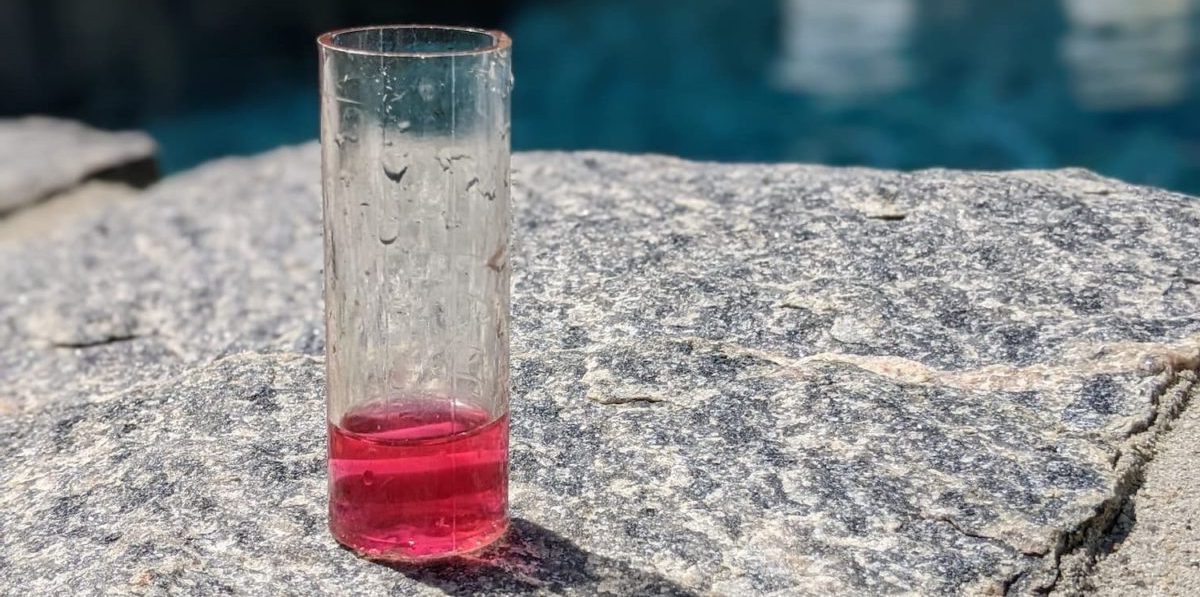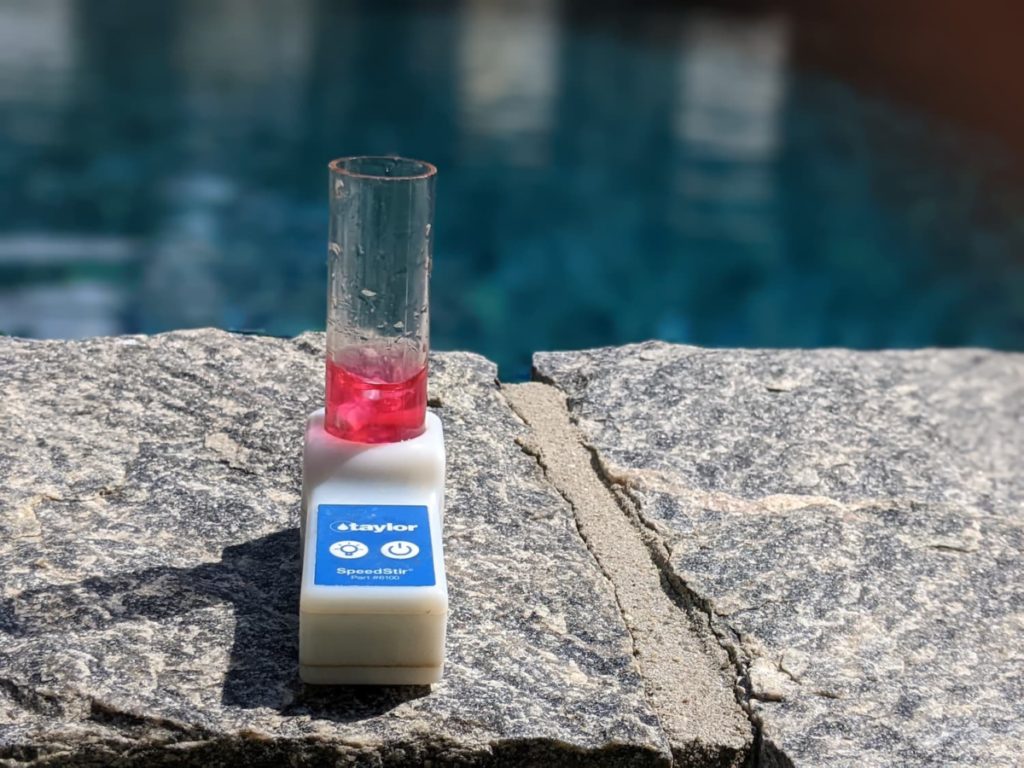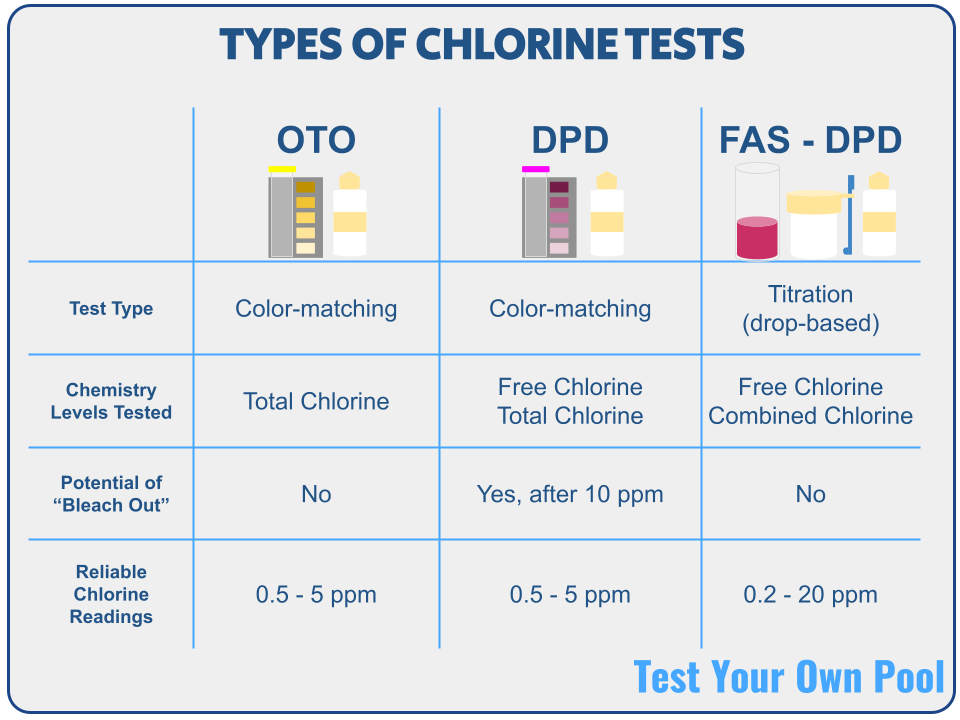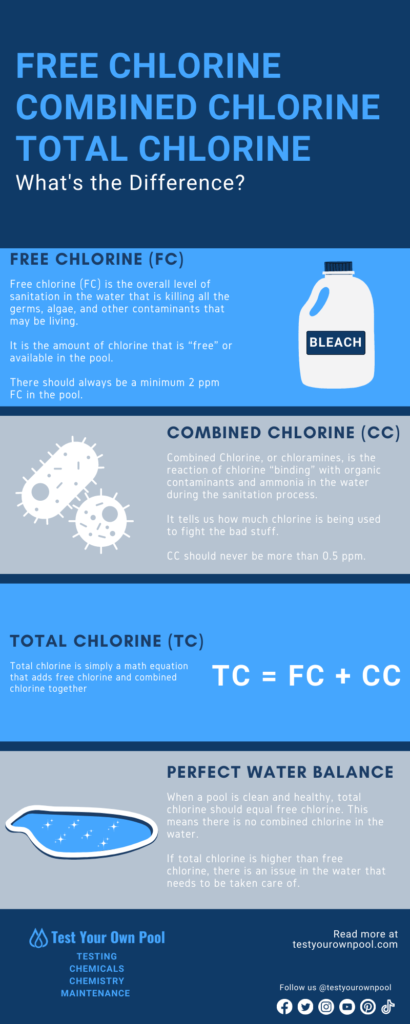Total Chlorine vs Free Chlorine: What is the Difference?

When learning about pool chemistry and water balance, one of the key measurements is chlorine. While different types of chlorine are available to sanitize the water, they all have one goal: maintaining free chlorine (FC) levels.
But, what about total chlorine and combined chlorine (CC)? There is a difference between these chlorine measurements, and while they are easy enough to understand, it is important to know the distinctions between each.
What is Free Chlorine?
Free chlorine (FC) refers to the chlorine in the water that is “freely” available for sanitizing. The overall level of sanitation is killing all the germs, algae, and other contaminants that may be living in the water.
When adding chlorine to the pool, you effectively increase free chlorine levels.

What is Combined Chlorine?
Combined chlorine (CC), or chloramines, is the reaction of free chlorine “binding” with organic contaminants and ammonia in the water during sanitation.
Free chlorine reacts with contaminants and even swimmers’ sweat, urine, or other bodily fluids, forming chloramines. High levels of chloramines will start to get that patented chlorine pool smell we all know and hate.

Ideally, combined chlorine should always be 0. Anything above 0.5 ppm might indicate a problem in the pool that needs to be addressed quickly.
What is Total Chlorine?
To recap, free chlorine measures the amount of chlorine available and combined chlorine tells us how much is being used to fight the bad stuff.
Total chlorine (TC) is simply a math equation that adds free chlorine and combined chlorine together:
TC = FC + CC
Let’s break this down into a more digestible visual!
So… What is the difference Between Total Chlorine vs Free Chlorine?
The difference is that total chlorine is the sum of combined and free chlorine, while free chlorine is how much is available to fight organisms in the water.
You might read about free chlorine and total chlorine sometimes being used interchangeably. While they are different as described above if the water is balanced that should be OK.
After all, if CC should be 0, then FC = TC, right???
What if Total Chlorine is Higher than Free Chlorine?
If total chlorine is higher, that means there are chloramines in the water and there is an issue with the pool water.
This should be addressed quickly so it doesn’t become a bigger problem by either adding more chlorine or even shocking the pool if there are signs of an algae outbreak.
What if Total Chlorine is Lower than Free Chlorine?
Luckily, you don’t have to worry about this scenario because total chlorine can’t be lower.
Think about it, the least it could be is equal to each other. This shouldn’t be an issue unless there is a way for free chlorine to be negative!
Testing Total, Free, and Combined Chlorine
First, if you are testing your pool, it ideally should be done with a test kit rather than strips. While strips are quick and easy to use, kits are much more accurate and reliable in the long run.
Most test kits will test for a variation of each chlorine item. It depends on the type of kit. There are three different kinds of chlorine tests:
- OTO Test: An OTO chlorine test is the most basic and will only test for total chlorine. It cannot separate free and combined chlorine
- DPD Test: DPD test will measure total and free chlorine. Using the TC = FC + CC, a little math will need to be done to get combined chlorine levels.
- FAS – DPD Test: The most accurate of the three, FAS – DPD testing measures free chlorine and combined chlorine separately. Simply add them together to get total chlorine.

Putting it All Together to Keep Your Pool Clean and Healthy
The high-level summary here is to ensure that there is always free chlorine in the pool.
Daily testing will help ensure they are at adequate levels based on your current CYA.
Test. Add chlorine. And enjoy the pool!

